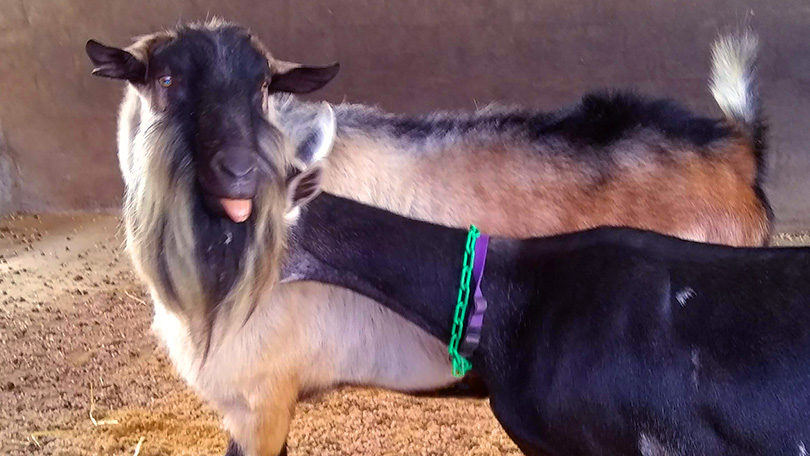
Dairy goats are usually seasonal breeders. Most breeding occurs in late summer through early winter. The goat has an 18-21 day estrus cycle or “season.” The doe’s “season” lasts from a few hours to two or three days. The gestation period is five months. Twins are common, but single or triplet births are not rare. A doe milks approximately ten months following kidding, then is held dry for two months before her next freshening.
Bucks have a strong musk-like odor during breeding season, but are not offensive with proper management. The doe has no odor at any time. Many small herds do not keep a buck if stud services are available from other local herds. Only bucks from high quality parents should be kept for breeding purposes. Artificial insemination is another option.
Yearling kids may be bred in the first year at 7-10 months of age, depending on breed, if they have grown well to about 80 lb. and are of good size and condition. Body weight relative to breed is more important than age and can influence lifetime performance. In dairy breeds in the United States, many bucklings are fertile by 5 months of age, but successful breeding has occurred as early as three months of age. The doe kid may be able to reproduce at three months of age, but should not be allowed to do so, as her growth may be permanently stunted. To prevent this, buck kids should be separated from doe kids at an early age. If breeding doe kids is postponed much beyond 10 months of age, they will be less productive. Older kids are not as easily settled at first breeding and may have lower lifetime productivity.
Most goats are seasonal breeders, and their season is initiated by decreasing daylight. Thus, their season is from late August through January usually. However, goats can also be “fooled” into thinking that the short-day season has arrived by manipulating artificial light-hours per day and thereby initiating estrous cycles out-of-season.